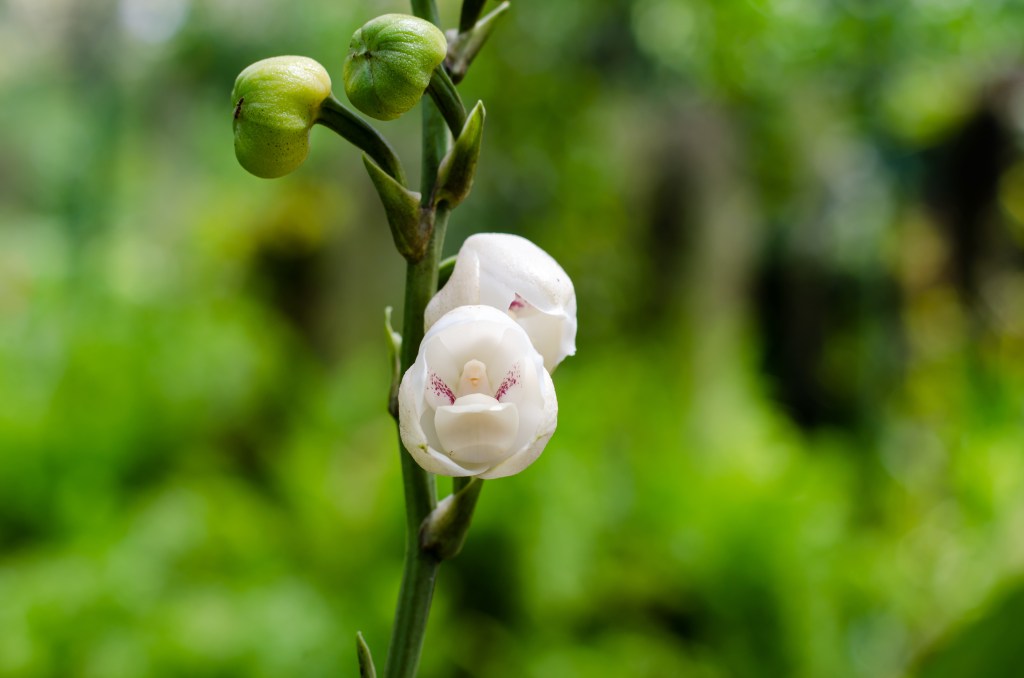One in 5 species of reptiles, in danger of extinction 0:38
(CNN Spanish) --
Biodiversity Day implies, above all, a reminder of the alarming speed with which we are destroying our planet.
But it is also an occasion to marvel, surprise and even have fun with the richness of the species that inhabit the Earth.
Have you ever played find shapes in the clouds?
If you have, you know how humans are capable of finding forms that are familiar to us in the most unpredictable times and places.
And this, as we show you below, also happens in plants and has a scientific explanation.
Pareidolia, the reason we see a (monkey) face on this orchid
(Credit: Adobe Stock)
You will not be surprised to discover that this flower is popularly known as "monkey orchid".
But this was not his name at first.
Carlyle Luer, who identified these types of flowers in 1978, realized how unusual they were and named them
Dracula
, after the Latin word for dragon, according to the American Orchid Society.
Today more than 90 species of this type are recognized, mainly in eastern Colombia and Ecuador.
advertising
Why do we see a face?
The explanation lies in a psychological phenomenon known as pareidolia, explains here the Chicago Botanic Garden.
Pareidolia, a word that does not exist in the Spanish dictionary, can be defined as "a situation in which someone sees a pattern or an image of something that does not exist."
"In these cases, imaginations can run wild and people conjure up a face, body part, animal, or other real-world object" in a place where it isn't found, explains a popular study on the subject called The Potato! fried really looks like Elvis!
There are multiple flowers in which you can notice this phenomenon, for example in the "dove orchid", the national flower of Panama that is increasingly rare to find.
If you look closely at the center, you can probably see a bird with outstretched wings.
It is also known as the "flower of the holy spirit".
And how about this
Caleana major
or, as it is more popularly known, "flying duck orchid"?
Can you see the resemblance?
To find it you must travel further: its habitat is in Australia and New Zealand.
Fooling the pollinators
In some cases, it's not just a trick of our minds: it's actually a strategy of the plants.
Perhaps you know cases of mimicry in the animal kingdom.
There are insects that, for example, mimic bees, wasps and hornets that are well protected from potential predators.
There are much more curious cases, such as that of certain Philippine cockroaches that have been modified to imitate beetles that are not edible.
Many flowering plants, as the Encyclopedia Britannica explains, attract insects through bright colors that indicate the presence of nectar but not having it.
Some of them, like the "bee orchid" seen in this photo, "take the deception further," explains the encyclopedia: they mimic insects.
Within this type the best known are the
Ophrys
, whose lip is a specialized petal that acts as a fictitious female of a bee or wasp depending on the specific plant.
The resemblance becomes such that the males of these species go to her with the intention of copulating with the female, which turns out to be a farce.
In that attempt, however, the insect takes the pollen from the orchids and then carries them to other flowers.
Here a key is the size of the flowers: if they are very large, the male does not reach the stigma of the flower, the vital part for this process, and if they are very small they do not provide the necessary stimulation.
Color matters too.
Males are more attracted to dark colors.
And it's not just about the visual aspect.
Scent also plays a role in the case of these mimic orchids, which in some cases secrete substances that guide males to them.
This is also the case with "spider orchids", which developed a resemblance to spider wasps to attract them as pollinators.
Cunning, right?
Wealth at risk: the sixth mass extinction is already underway
The sixth mass extinction, which is the first caused by humans, is already underway, scientists have warned for decades.
In 2019, the UN warned that one million of the 8 million species face possible extinction, and that this in many cases could happen within decades.
Climate change, habitat loss, pollution and the exploitation of natural resources are some of the great threats.
Since industrial times, humans have modified in some way 75% of land and 66% of marine ecosystems.
InstaNews








